Universal Health Coverage
Leaving no one behind
The more you read up on developing health initiatives and regulation negotiations, the more you bump into the term ‘Universal Health Coverage’, or ‘UHC’ in short.
But what exactly does this comprise, because on the face of things, why would you disagree with it? It works in Scandinavia, no?
-
To quickly write off the entire concept is easily done. It is completely unaffordable, and even under the assumption that it somehow wouldn’t be - the workforce simply doesn’t exist, nor is there the capacity for rapid training of key personnel in desired quantities.
Assuming static cost, UHC would require an equalisation of healthcare throughout the world, meaning those nations presently with great healthcare systems, would see quality seriously impaired - most certainly, triggering a furious voter backlack. In other words, the other option is the more likely - cost would increase - markedly.
And as the vast majority of the world cannot afford Swiss or Scandinavian levels of healthcare, wealthy nations would - once again - have to pay, and this at a time where healthcare budgets in those nations tend to stagnate, at best. No way this would be politically feasible.
However, let’s entertain the notion that somehow, these aren’t legit concerns, and that doctors and nurses in this scenario would fall like manna from heaven, and state budgets everywhere run with colossal surpluses, enabling this colossal, global growth in expenditure.
-
In September, 2019, CSEM - the ‘Civil Society Engagement Mechanism for UHC2030’ - penned a report titled ‘Leaving no one behind’. It’s intended as a monitoring report, a review of current progress; the present state of implementation.
And it’s rather illuminating, to say the least. Especially the ‘Recommendations’.
The recommendations, in short -
Leave no one behind
In order to ‘leave no one behind’ either everyone goes along willingly, or the solution has to be mandatory. The alternative here, of course, is the more extreme version - the death of those unwilling to play ball. While the latter would be just fine in a Marxist Utopia like that of Pol Pot, I sincerely hope it’s not a legit option.
The monitoring of UHC progress
Again, more surveillance. Especially if delivering on stated promise ‘gather the most accurate and up-to-date information about UHC progress among people who are furthest behind‘.
It continues - ‘the usual monitoring approaches may not be relevant‘ - conventional approaches are no good, in other words, what is required is next-gen surveillance practices. Finally, ‘data collection, analysis, verification and dissemination‘ - this is right along the usual cry for global surveillance.
To improve service coverage of UHC
’Significantly increase coverage of both the infectious disease and non-communicable disease components’. Yup, surveillance again. Coverage details granularity of approach, or call it resolution. Higher quality data will yields better coverage will be the argument - it always is.
And non-communicable disease, for the record, refers to the likes of air quality, which can be ‘solved’ through cracking down on perceived pollution from, say, personal transportation - like cars. Oh wait, isn’t that what C40 presently aim to do?
The next part - ’expand services for reproductive, maternal, newborn and child health’. This could be read as vaccines for everyone, but they’re hardly mentioned in the document at all. The alternative interpretation here is through SDG 16.9 - in short, providing legal identity from cradle to grave as a ‘right’. And ID - digital, especially - is pretty useful when you’re trying to work out who has received less ‘health equity’. The World Bank, for instance, has an ID4D program - Identification for Development (ID4D) Initiative - which they use in developing world projects.
The document does provide a link, should we wish to know more - ‘Country Support Package for Equity, Gender and Human Rights in Leaving No One Behind in the path to Universal Health Coverage‘.
I mean, this isn’t rocket surgery - to kick off with, we see lots of montoring required (surveillance by a different name) of the various Determinants of Health, and what’s claimed is that this is about your human rights.
One overriding question. Setting aside the database, the monitoring, and all the other components of the One Health global surveillance state - how can they know who’s being ‘missed’? This, it does not address.
Carefully hidden on page 4 - the Social Determinants of Health. That was entirely obvious. I have previously written on the Determinants of Health - in short, by presenting not health as health, you can justify surveillance on all things not health for the sake of health.
The Determinants of Health
In 2008, The World Health Organisation released a report titled, ‘Closing the Gap in a Generation’. It was the final report of the Commission on Social Determinants of Health. And, much like with ‘One Health’, the genuine objective is hidden in plain view,
-
The paper, ultimately, is light on this key detail. In order to get said, you have head over to the supplied link and a report ‘Promoting health equity: WHO health inequality monitoring at global and national levels‘ - and that does deliver, though as fully expected, you have to actively look for the missing detail.
The Declaration of Alma-Ata is mentioned on page 1, which also throws in the Social Determinants of Health. But the detail which matters starts on page 4; ‘data must be comparable‘ - this will require a standardised format for data. And this, being a global benchmark, needs to be applied globally.
The Declaration of Alma-Ata
In 1978, the international community came together in Alma-Ata in the Soviet Union, from which a declaration was issued. A declaration which now rings louder then ever. - Let’s get one of the more troublesome wordings out of the way, sooner rather than later. The
But page 7 is where the lacking detail finally appears - ‘Countries should invest resources in developing, strengthening, and/or expanding data collection practices of diverse data sources including household health surveys, facility data, censuses, vital registration systems, and surveillance systems‘.
Which surveillance systems, exactly?
‘Whenever possible, data collection should include small-area markers (such as postal codes) or identifiers (such as personal identification numbers) that permit linkages between data sources‘
Right, great, the surveillance data needs association with an identifier. A digital one, at that. Sure, argue to your heart’s content about this being a scrambled version, but it won’t be terribly difficult to decipher said ‘identifier’ regardless. In fact, I’m sure they’ll eventually realise this, and argue we might as well link it straight to your digital ID anyway.
Because in order to provide the detail broken down by location, this would have to be added to the overall identifier associated dataset - in addition to background, sex, education levels, and so forth - and from there, you can use brute force to associate identifiers with individuals, anyway.
Look, you can argue that this is a hyperbolic interpretation, but it really isn’t. The quantity of detail attached to said ID will reveal your genuine ID in a few microseconds, but for argment’s sake let’s have a look at this from a different angle. Here’s a General Assembly document dating back to March, 2014. I could have shown you this to start with, but I wanted to go through the public documents - for two reasons, specifically -
To show you how misleading and opaque official documentation is
To show you that usually, even the most intentionally obfuscated document provide a path to the real information anyway. It has to, in order for them to later claim that they ‘already told you’.
The General Assembly document - a statement on behalf of the European Union - states (leaving no uncertainty, nor anyone behind) - ‘key aspects of the rule of law, such as birth registration and legal identity, are a prerequisite to access to health services or education‘.
Simply put - no Digital ID, no healthcare, thereby leaving you behind. We can’t have that. So you must have Digital ID. Besides, as 16.9 states - it’s a right. A human right.
And these organisations always stand up for your human rights.
And this was released in 2014.
-
… but we don’t have Digital ID, I hear you object. Well, about that…
I have written on Digital ID in the past. Clare Sullivan is a VIP in that regard.
Clare Sullivan
No, this is not a repeat from 2006, when she with Tony Blair’s full cooperation attempted to push through National IDs. Since that ill-fated attempt, Clare has been busy. But this time, covertly so. Because when you want to get things done, better not involve democratic principles.
On June 5, 2023, the WHO and the European Union announced that the former would adopt the European Union (EU) system of digital COVID-19 certification.
This didn’t really come as much of a surprise, because it was indirectly announced in a Center for Global Development note, released in February, 2021.
To cut to the chase - the EU digital vaccination certificate is digital ID.
The note was penned by Alan Gelb, who’s worked on Digital ID for years. Now, had the incessant pressure to keep up with our ‘vaccines’ worked, we’d all have one of these certificates. We’d all have our Digital IDs.
And the WHO would have spread this joy throughout the world. In fact, this adoption took place in mid-2023, so they will undoubtedly give this another try.
-
UHC is also a common theme throughout the zero draft of the Pandemic Treaty. And in one particular item, it’s listed along with the desire to ‘leave no one behind’. What’s interesting in this regard, is that this relates to an alleged ‘heavy impact on frontline workers’.
The very same frontline staff, who were pressured into accepting the vaccine in 2021 throughout the world. Here’s Rockefeller and Gates-connected Peter Piot on the matter. He called for mandatory vaccination of healthcare workers in late 2021, when Omicron unofficially ended Covid-19, a fact yet unknown to these crooks.
And here’s his wife, similarly hyper-connected Heidi Larson, chiming in on the issue.
The darker side here is that Universal Health Coverage leads to mandatory vaccination - which Piot and Larson both encourage, along with many, many, many health authorities the world over, as we saw during during Covid-19.
Biden even tried to force it through for everyone working in public capacity.
And the ESWI? They weighed in on the debate already back in 2005 - such foresight.
I have written extensively on the ESWI - they’re a highly influential front for big pharma, in short.
The ESWI
The ESWI was officially founded in 1993 at the Pasteur Institute in Paris. Prior to formation, the first official meet took place at the ‘Options for the Control of Influenza II' in Courchevel, September, 1992. Kind of telling, really - Courchevel is
-
So when asked what the contemporary term ‘Universal Health Coverage’ outlined in WHO documents and other health initiatives mean, it’s a somewhat difficult question to answer. Because the correct answer depends on the context. It can be taken as mandatory vaccination, or surveillance, or even Digital ID.
It’s a descriptive term of the entire Global Health Security Agenda.



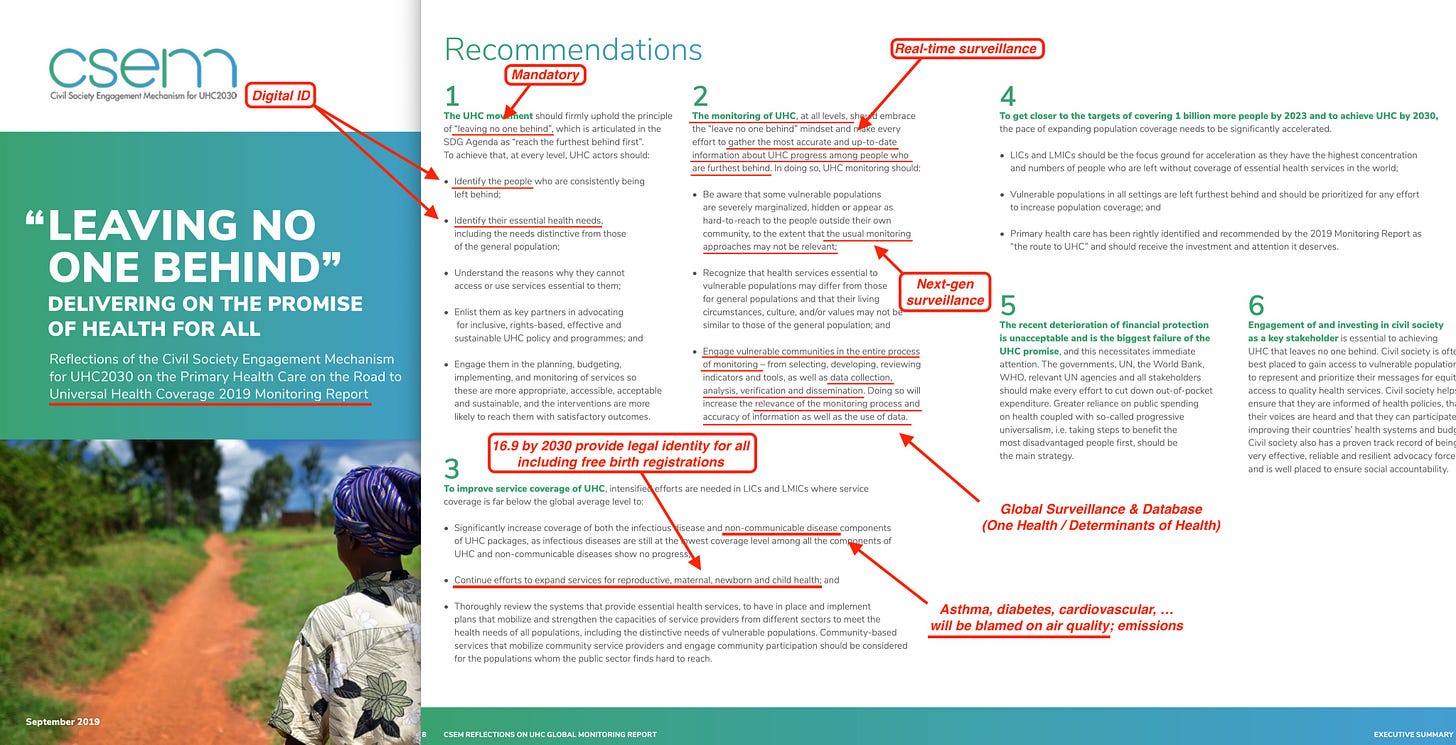


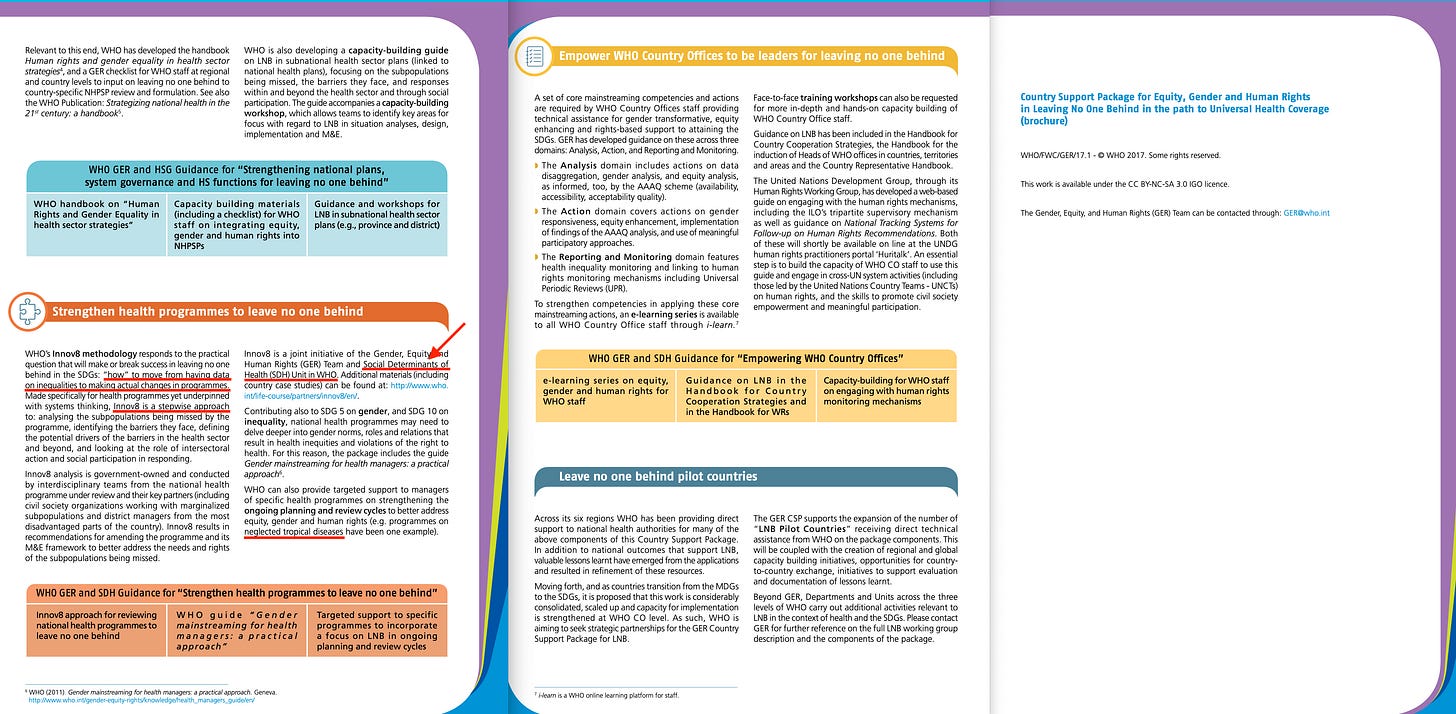





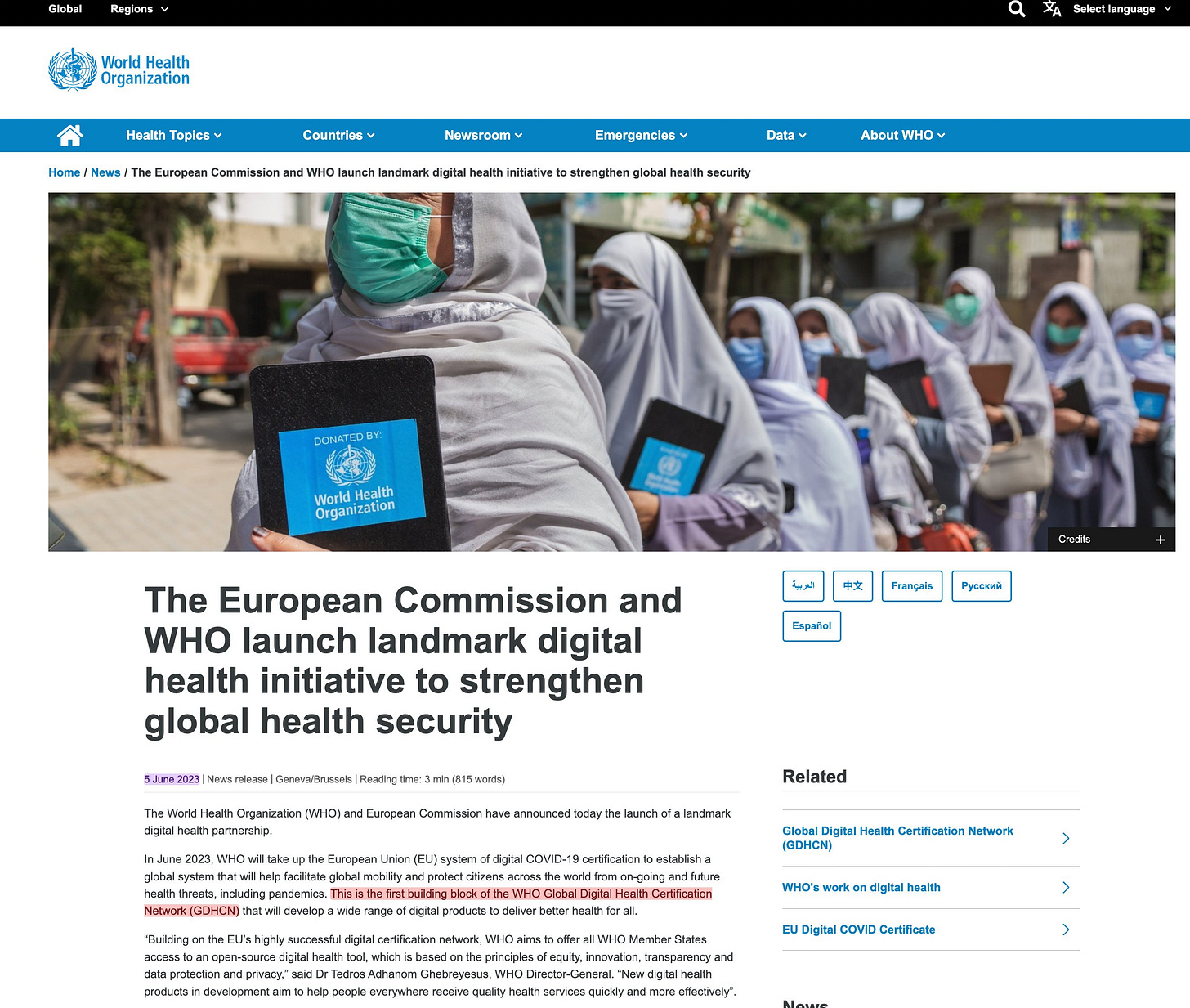



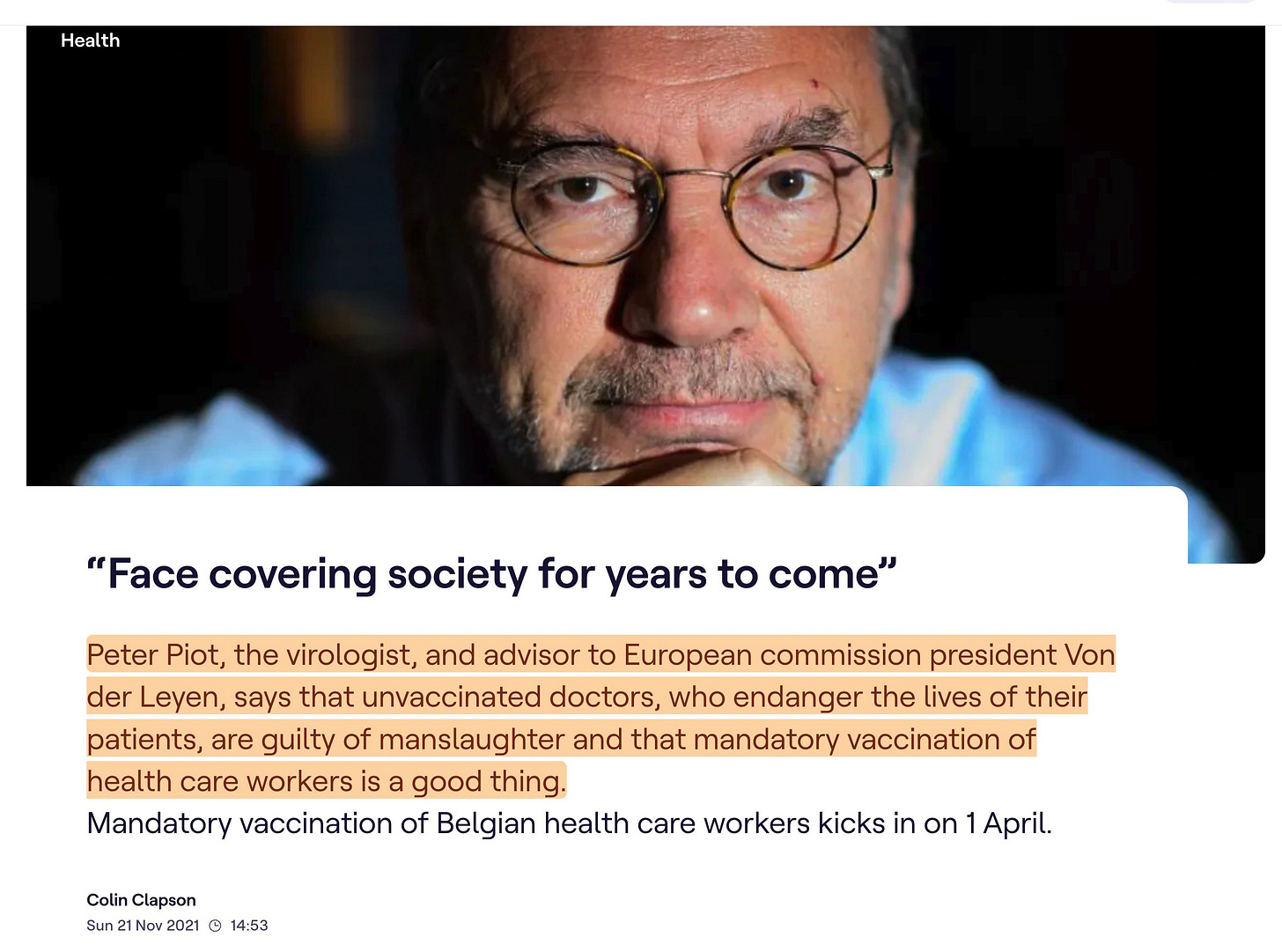


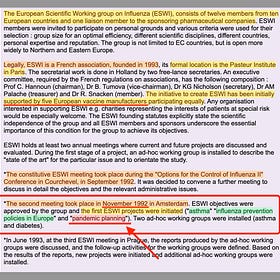
I agree it's about mandatory "vaccination" and surveillance, as that fits with BioDigital Convergence
IEC SEG 12 Webinar Bio-Digital Convergence Standardization https://www.iec.ch/system/files/2022-12/day_2_seg_12_webinar_biodigital_convergence_v1.0_0.pdf
01 SEG 12 Webinar BioDigital Convergence v0.2 - IEC https://www.iec.ch/system/files/2022-12/day_1_seg_12_webinar_biodigital_convergence_v1.0_0.pdf